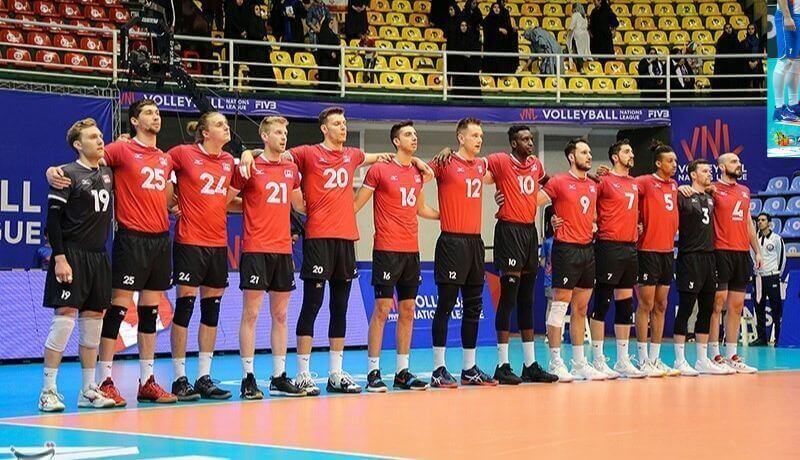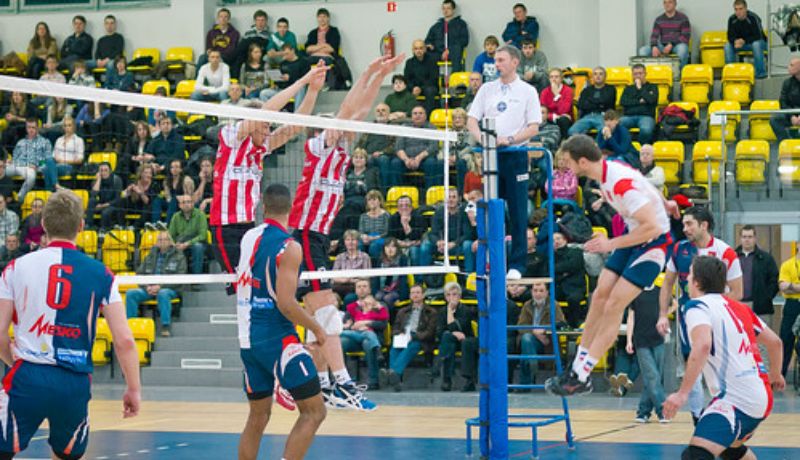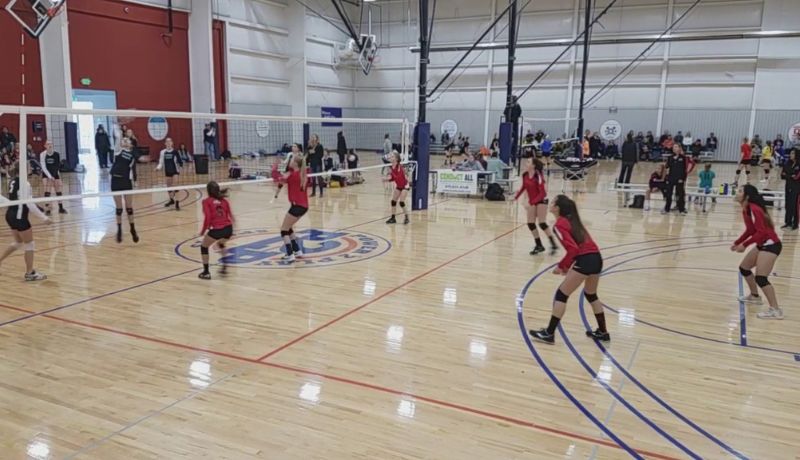How many players are on a volleyball team?

Volleyball is an exciting and competitive sport that has captivated fans around the world for more than a century. Throughout its history, the game has evolved in various ways, including the rules surrounding team composition and the roles of each player on the court.
This article aims to provide an in-depth look at the number of players on a volleyball team, including the positions, rules and strategies that define the sport.
Brief History Volleyball team Player and Basic Gameplay

Volleyball was invented by William G. Morgan in 1895 as a blend of basketball, baseball, tennis and handball. Since then, the sport has evolved significantly, both in terms of rules and popularity. Today, volleyball is played worldwide and is enjoyed by millions of people at various levels of competition, from recreational leagues to the Olympics.
In volleyball, two teams made of six players on each side, face each other on a rectangular court divided by a net. The objective of the game is to ground the ball on the opponents’ side of the court, following a sequence of bump, set and spike. Players must also prevent the ball from touching the ground on their side of the court.
Breakdown of each position and their respective role on the team

In volleyball, each player on the team has a specific role to play, depending on their position. In a standard formation, a team will have a setter, two outside hitters, a libero, a middle blocker and an opposite.
- Setter: The setter acts as the team’s offensive leader, setting up the ball for the hitters and dictating the flow of the game.
- Outside Hitters: Often the most comprehensive players on the team, outside hitters are responsible for attacking the ball from the left side of the net. They need to be good at both hitting and passing.
- Libero: The libero is a defensive specialist, typically playing in the back row. They are known for their excellent passing and digging skills and they cannot attack the ball above the height of the net.
- Middle Blocker: As the name implies, middle blockers are primarily responsible for blocking the opposing team’s attacks. They also attack the ball from the middle of the net.
- Opposite: Positioned opposite the setter on the court, the opposite is typically the team’s best hitter. They are responsible for blocking the opposing team’s outside hitters and are often the go-to option for attacks in high-pressure situations.
Remember, while these are the traditional roles assigned to these positions, the beauty of volleyball lies in its versatility and the ability for players to adapt to the needs of the game.
In addition to the six starting players, volleyball teams usually have substitutes with various skill sets, depending on the coach’s strategy. The total number of players on a roster may vary, but generally, teams will have around 12-15 players, including starters and substitutes.
Impact of Team Size on Strategy and Dynamics

The number of players on a volleyball team, along with their specific positions, can significantly influence game strategies, player rotations and even communication dynamics. Coaches often develop specific rotation patterns based on their players’ strengths and weaknesses, ensuring optimal use of everyone on the team.
Substitution dynamics are also critical in volleyball. Coaches must balance the need for fresh players with maintaining the right chemistry on the court. Substitutes may enter the game for various reasons, including specialized skills, countering a specific opponent, or boosting team morale.
Communication and coordination among players are key factors in the success of a volleyball team. A larger team size may require more effort to develop effective communication strategies, while smaller teams may find it easier to build strong bonds and camaraderie.
Recent Changes and Adaptation

In recent years, volleyball has seen several changes and adaptations both in rules and team structures. The FIVB (Federation Internationale de Volleyball) continually revises game rules to improve the sport’s speed and excitement. For instance, the introduction of rally scoring in the late 1990s significantly accelerated the pace of the game.
Similarly, teams have adapted their strategies to these changes. Nowadays, more emphasis is placed on specialized roles. The concept of the libero, a defensive specialist, was introduced in 1998 to add a new dimension to the game. This change resulted in teams placing higher value on defensive skills, leading to an evolution in team dynamics.
In addition, the rise of beach volleyball, with teams of only two players, has led to a different focus on skills and tactics. Players must be adept in all aspects of the game, demonstrating the flexibility and adaptability inherent in the sport of volleyball.
Moreover, the use of technology in volleyball has also increased. Video review systems are now commonly used in professional games to challenge referee decisions, which has added another layer of strategy and decision-making to the sport.
These changes and adaptations have made volleyball more dynamic, exciting and strategic, reflecting the sport’s constant evolution.
Conclusion:
The number of players on a volleyball team depends greatly on the game itself. There can be anywhere from two to six players on a side, making it incredibly diverse and entertaining for anyone who wishes to play. It’s also important to remember the rules and regulations surrounding this game as they can differ from place to place.
Therefore, if you’re considering taking up volleyball, research your local regulations before forming a team. No matter what type of volleyball you decide to play in the end, remember that it can be an immensely enjoyable experience that will challenge you mentally and physically. So grab your friends or family members and hit the court for some fun matches – just make sure there’s enough room for everyone!







